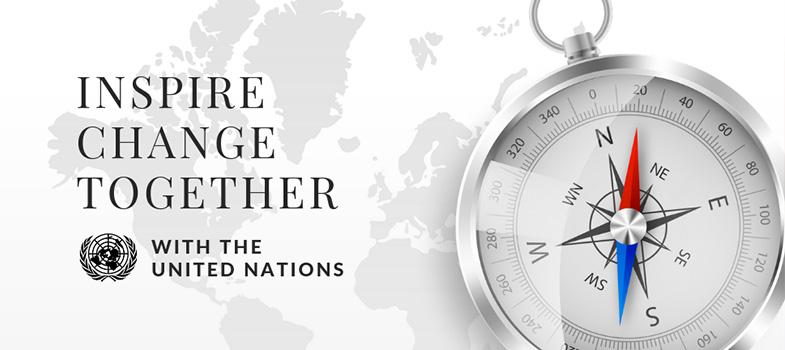3.4 Detection of corruption
In this final section of Unit 3, a summary of the discussion given on detecting corruption provided in E4J Anti-Corruption Module 6 will be given to illustrate how students can be encouraged to connect their understanding of ethical theories to anti-corruption practices.
Corruption can be detected through a variety of methods, some of the most common of which are reports (by citizens, journalists, whistle-blowers and self-reporting).
Self-reporting
Some States have laws and incentives that encourage individuals to report on corruption in which they played a role. This process, known as self-reporting, is often associated with private sector entities, but is applicable to corruption in any organization. Punishment for corruption can be severe, and therefore penalty mitigation is a common incentive to encourage self-reporting.
One of the challenges of addressing corruption through self-reporting is finding the balance between the investigative benefits that arise from cooperation and the prosecution of persons committing corrupt acts. While there is no general legal duty to disclose corrupt activities in many countries, specific legislation in areas such as securities and corporate law may require self-reporting. The United States Foreign Corrupt Practice (FCPA) Act, penalizing companies, registered in the US, for their activities abroad, creates a violation for failure to self-report corrupt acts involving financial books and records. In fact, many countries have provisions for penalty mitigation as an incentive to self-report. n China, there is an express provision "for reduction or exemption of the applicable sanction in the event that a person voluntarily discloses conduct that may constitute bribery" of a foreign public official, and more generally with domestic bribery (Turnill and others, 2012).
Citizen reporting
Members of the public are often the first ones to witness or experience corruption, particularly in the area of public services. To help expose corruption, members of the public can be instrumental in reporting on corruption through standard crime-reporting channels at the national or municipal level, such as the police. To encourage citizen reports on corruption, many governments have developed more direct ways for the public to report corruption. For example, specialized anti-corruption bodies can establish dedicated reporting channels for corruption offences.
In addition to specialized anti-corruption bodies, new technologies are increasingly playing an instrumental role in facilitating citizen reporting. For example, in many countries, websites and smartphone applications enable citizens to report incidents of corruption easily. Perhaps the most popular example is I Paid A Bribe [Tip: hold Ctrl and click a link to open it in a new tab. (Hide tip)] in India, which has registered more than 187,000 single reports by citizens and over 15 million visitors as of August 2019. Its interactive map allows the website's visitors to monitor in which cities and sectors in India corruption occur the most as well as the amounts of bribes paid. A similar mobile phone scorecard programme was developed in the Quang Tri province in Vietnam. This allows citizens to score the performance of the administration of public services and to report on whether they had been asked to pay a bribe.
Journalism and media reporting
Journalism and the media play a key role in reporting, exposing and curbing corruption. Reporting on corruption is "making a valuable contribution to the betterment of society" and investigative journalism in particular "holds the potential to function as the eyes and ears of citizens" (UNODC, 2014, pp. 2, 6). Media reporting can be a means of corruption detection that prompts organizations and law enforcement agencies to conduct investigations (or further investigations) into allegations of corruption. Reports of corruption in the media can also be used to gather more information about and evaluate instances where corruption has been detected and requires further investigation. One highly publicised example is the Mossack Fonseca Papers case, which is commonly referred to as the Panama Papers (this case is further discussed in Module 10 of the E4J University Module Series on Anti-Corruption).
Whistle-blowing
Given that corruption can benefit the individuals directly involved, and there is a variety of means to cover up corruption within organizations, some corruption cases can only be detected if someone on the inside reports it. This kind of reporting activity is frequently called "whistle-blowing", because the reporting person sends out an alert about the activity, in the hope that it will be halted by the authorities. Usually, the whistle-blower reports the act to an appropriate internal manager, executive or board member. Some entities have established protocols for reporting. If that proves unsuccessful, whistle-blowers might raise the issue with external regulatory or law enforcement agencies or may choose to expose the matter publicly by contacting the media.
To date, the most commonly used academic definition for whistle-blowing is from Near and Miceli (1985) who define whistle-blowing as the "disclosure by organisation members (former or current) of illegal, immoral or illegitimate practices under the control of their employers to persons or organisations who may effect action".
Activity 3.4 How to report corruption
This activity is taken from E4J Anti-Corruption Module 6.
Start of Question Identify one or more instances of local corruption, and have students debate which mechanism, e.g. whistle-blower, media, internal audit, external oversight or police investigation, is possible or effective in their community for reporting corruption in those instances.
Have students engage in open discussion of methods of reporting corruption. Lecturers can support student discussions by noting a possible drawback, concern or complexity regarding a reporting method that students did not think of. The lecturer should encourage students to think about what challenges there might be to reporting, and how they might be overcome by systemic change. Use each example to promote further student thinking and insight by having students weigh each method's effectiveness and risk.
3.3 Deontology
